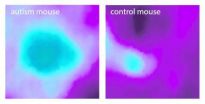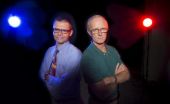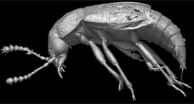(Press-News.org) CAMBRIDGE, Mass. (July 31, 2014) – Long associated with enabling the proliferation of cancer cells, the ancient cellular survival response regulated by Heat-Shock Factor 1 (HSF1) can also turn neighboring cells in their environment into co-conspirators that support malignant progression and metastasis.
The finding, reported by Whitehead Institute scientists this week in the journal Cell, lends new insights into tumor biology with significant implications for the diagnosis, prognosis, and management of cancer patients.
Over the past several years, researchers in the lab of Whitehead Member Susan Lindquist have been investigating the role the transcription factor HSF1 plays in supporting malignancy. In normal cells, stressful conditions, including those caused by heat, hypoxia, and toxins activate HSF1, which serves to maintain protein homeostasis and helps the cells endure tough times. Cancer cells, however, are capable of hijacking this heat-shock response to their own benefit. Two years ago, Lindquist's lab implicated HSF1 in this corruption, showing that it activates a set of genes in cancer cells quite distinct from those up-regulated in normal cells during heat-shock.
Building upon that research, the lab has now discovered that HSF1 operates not only on the cancer cells in a tumor, but also on the cells of the tumor microenvironment, or stroma. Here HSF1 drives a transcriptional program distinct from that operating in adjacent cancer cells. HSF1 activation in both cancer cells and stromal cells is a powerful, complementary combination that fuels malignant processes.
"This is actually a beautiful example of evolution," says Ruth Scherz-Shouval, a postdoctoral scientist in the Lindquist lab and first author of the Cell paper. "It's recognizing that the tumor is like an organism that adheres to evolutionary principles. HSF1 has been highly conserved over time, supporting the survival of organisms ranging from yeast to human, so it makes sense that it is co-opted here. Both cancer cells and the microenvironment are sensing changes in the tumor and responding, signaling to one another to help the "organism", albeit to the detriment of the host. These are different programs, but they're both controlled by HSF1 and serve the same purpose."
In a series of experiments, Scherz-Shouval and colleagues found clear evidence of HSF1 activation in stromal cells known as cancer-associated fibroblasts, or CAFs, in a variety of human tumors, including breast, lung, skin, esophageal, colon, and prostate cancers. Moreover, they discovered that not only does HSF1 activation in CAFs up-regulate genes supporting malignancy, it also suppresses genes that would ordinarily trigger a protective, anti-cancer immune response in surrounding tissue. Although such a synergistic dynamic may seem daunting to overcome, it may in fact actually present a real opportunity for therapeutic intervention.
"It's important to find HSF1 operating this way in the stroma," notes Scherz-Shouval. "The tumor microenviroment tends to be more genetically stable and less prone to mutation, suggesting that even if cancer cells could mutate to evade therapeutic disruption of HSF1, supportive cells in the stroma could still be susceptible."
"Although it's thought to be quite difficult to drug a transcription factor like HSF1 directly, the role of HSF1 suggests that we might be able to treat cancer more effectively by modifying the underlying tumor biology," says Luke Whitesell, an oncologist, Lindquist lab senior scientist, and a corresponding author on the latest Cell paper. "Targeting the dual role of HSF1 has the potential to change how a cancer responds to therapeutic interventions, perhaps making it less able to cope with other therapies."
Another significant finding from the research is the potential to use stromal HSF1 activation as a diagnostic and prognostic biomarker. In analysis of tumor samples from breast cancer patients, the scientists found that HSF1 activation in the stroma was associated with poor patient outcomes, including reduced disease-free survival and overall survival. Further, the researchers also found that stromal HSF1 activation in samples from patients with early-stage non-small cell lung cancer was also associated with poor outcomes.
Although the scientists emphasize that the numbers of breast and lung cancer samples studied were small, the correlation between stromal HSF1 activation and poor patient outcomes was strong enough in each case to warrant further clinical investigation. They add that an HSF1-based biomarker could help predict which patient tumors, early-stage lung in particular, are most likely to progress and might benefit from more aggressive therapy. Conversely, such information could prevent patients with less aggressive cancers from suffering the ill effects of "over-treatment" with highly toxic therapies.
INFORMATION:
This work is supported by the National Institutes of Health and the National Cancer Institute (grant K08 NS064168 and K99CA175293), the Howard Hughes Medical Institute, the V Foundation, the Komen Foundation, the Human Frontiers Science Program, the Fulbright Program, the Jared Branfman Sunflowers for Life Fund, the Israel National Postdoctoral Award Program for Women in Science, and the J & J COSAT focused funding program.
Written by Matt Fearer
Susan Lindquist's primary affiliation is with Whitehead Institute for Biomedical Research, where her laboratory is located and all her research is conducted. She is also a Howard Hughes Medical Institute investigator and a professor of biology at Massachusetts Institute of Technology.
Full Citation:
"The reprogramming of tumor stroma by HSF1 is a potent enabler of malignancy"
Cell, July 31, 2014
Ruth Scherz-Shouval (1), Sandro Santagata (1, 2, 3), Marc L. Mendillo (1), Lynette M. Sholl (2), Irit Ben-Aharon (4,5), Andrew H. Beck (6), Dora Dias-Santagata (7), Martina Koeva (1, 8), Salomon M. Stemmer (4,5), Luke Whitesell (1,11), and Susan Lindquist (1,9,10)
1. Whitehead Institute for Biomedical Research, Cambridge, MA 02142, USA.
2. Department of Pathology, Brigham and Women's Hospital and Harvard Medical School, Boston, MA 02115, USA.
3. Department of Cancer Biology, Dana Farber Cancer Center, Boston, MA, 02215, USA.
4. Institute of Oncology, Davidoff Center, Rabin Medical Center, 49100, Israel.
5. Sackler Faculty of Medicine, Tel-Aviv University, 69978, Israel.
6. Department of Pathology, Beth Israel Deaconess Medical Center and Harvard Medical School, Boston, MA, 02215, USA.
7. Department of Pathology, Massachusetts General Hospital, Harvard Medical School, Boston, MA 02114, USA.
8. Department of Biological Engineering, Massachusetts Institute of Technology, Cambridge, MA 02142, USA.
9. Department of Biology, Massachusetts Institute of Technology, Cambridge, MA 02142, USA.
10. Howard Hughes Medical Institute, Cambridge, MA 02142, USA
Master HSF supports reprogramming of normal cells to enable tumor growth and metastasi
2014-07-31
ELSE PRESS RELEASES FROM THIS DATE:
Insular cortex alterations in mouse models of autism
2014-07-31
This news release is available in German.
The insular cortex is an integral "hub", combining sensory, emotional and cognitive content. Not surprisingly, alterations in insular structure and function have been reported in many psychiatric disorders, such as anxiety disorders, depression, addiction and autism spectrum disorders (ASD). Scientists from Harvard University and the Max-Planck Institute of Neurobiology in Martinsried now describe consistent alterations in integrative processing of the insular cortex across autism mouse models of diverse etiologies. In particular, ...
C. difficile vaccine proves safe, 100 percent effective in animal models
2014-07-31
An experimental vaccine protected 100 percent of animal models against the highly infectious and virulent bacterium, Clostridium difficile, which causes an intestinal disease that kills approximately 30,000 Americans annually. The research is published ahead of print in Infection and Immunity.
In the study, the vaccine protected the mice and non-human primates against the purified toxins produced by C. difficile, as well as from an orogastric spore infection, a laboratory model that mimics the human disease, after only two immunizations.
"Animals that received two ...
Scientists find growing consensus: Political attitudes derive from body and mind
2014-07-31
Lincoln, Neb., July 31, 2014 -- Do people make a rational choice to be liberal or conservative? Do their mothers raise them that way? Is it a matter of genetics?
Two political scientists from the University of Nebraska-Lincoln and a colleague from Rice University say that neither conscious decision-making nor parental upbringing fully explain why some people lean left while others lean right.
A growing body of evidence shows that physiological responses and deep-seated psychology are at the core of political differences, the researchers say in the latest issue of the ...
Strict genomic partitioning by biological clock separates key metabolic functions
2014-07-31
Irvine, Calif., July 31, 2014 — Much of the liver's metabolic function is governed by circadian rhythms – our own body clock – and UC Irvine researchers have now found two independent mechanisms by which this occurs.
The study, published online today in Cell, reveals new information about the body clock's sway over metabolism and points the way to more focused drug treatments for liver disease and such metabolic disorders as obesity and diabetes.
Paolo Sassone-Corsi, UCI's Donald Bren Professor of Biological Chemistry, and postdoctoral scholar Selma Masri report that ...
Simple tips to fend off freak-outs
2014-07-31
There's sad news in the study of happiness.
Rest assured, there is a happy ending, though.
University of Cincinnati research on perceived happiness shows that many college students are stressed out and aren't coping.
This is despite the fact that there are simple ways for students to relieve stress and feel happier, says Keith King, professor and coordinator of UC's Health Promotion and Education Program. The trouble is, they don't use them enough.
"We have a whole array of different stress-management techniques college students can use and that we teach, but they're ...
New report calls for strong, positive safety culture in academic chemical labs
2014-07-31
WASHINGTON -- Everyone involved in the academic chemical research enterprise -- from researchers and principal investigators to university leadership -- has an important role to play in establishing and promoting a strong, positive safety culture, says a new report from the National Research Council. This requires a constant commitment to safety organization-wide and emphasis on identifying and solving problems, rather than merely adhering to a set of rules and assigning blame when those rules are not followed.
Chemical hazards can be found in many academic fields ...
Spin diagnostics
2014-07-31
Magnetic resonance imaging (MRI), which is the medical application of nuclear magnetic resonance spectroscopy, is a powerful diagnostic tool. MRI works by resonantly exciting hydrogen atoms and measuring the relaxation time -- different materials return to equilibrium at different rates; this is how contrast develops (i.e. between soft and hard tissue). By comparing the measurements to a known spectrum of relaxation times, medical professionals can determine whether the imaged tissue is muscle, bone, or even a cancerous growth. At its heart, MRI operates by quantum principles, ...
Pressure probing potential photoelectronic manufacturing compound
2014-07-31
Washington, D.C.— Molybdenum disulfide is a compound often used in dry lubricants and in petroleum refining. Its semiconducting ability and similarity to the carbon-based graphene makes molybdenum disulfide of interest to scientists as a possible candidate for use in the manufacture of electronics, particularly photoelectronics.
New work from a team including several Carnegie scientists reveals that molybdenum disulfide becomes metallic under intense pressure. It is published in Physical Review Letters.
Molybdenum disulfide crystalizes in a layered structure, with ...
Oldest rove beetle in the Omaliini tribe found in French amber
2014-07-31
An international team of scientists from Spain, France, and the U.S. has discovered and described a rove beetle that is the oldest definitive member of the tribe Omaliini that has ever been found in amber. The discovery and description were made possible through the use of the propagation phase-contrast X-ray synchrotron imaging technique, which allows the detailed study of otherwise invisible specimens in opaque amber. The new species is described in the journal Annals of the Entomological Society of America in an article called "Oldest Omaliini (Coleoptera: Staphylinidae: ...
Free pores for molecule transport
2014-07-31
This news release is available in German.
Metal-organic frameworks (MOFs) can take up gases similar to a sponge that soaks up liquids. Hence, these highly porous materials are suited for storing hydrogen or greenhouse gases. However, loading of many MOFs is inhibited by barriers. Scien-tists of Karlsruhe Institute of Technology (KIT) now report in Nature Communications that the barriers are caused by cor-rosion of the MOF surface. This can be prevented by water-free synthesis and storing strategies.
MOFs are crystalline materials consisting of metallic nodes ...





